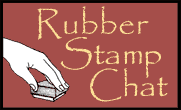You may ask yourself, ""what is she doing and WHY?"
Learning the affects that light has on our creations can take them from a flat one dimensional image to a three dimensional image that literally jumps off the page. With the introduction of Copics, Flourishes was careful to include the Neutrals in Warm and Cool Tones. With these colors you will be able to transform your creation into the three dimensional images that our world provides the human eye. Some people just have this natural ability to send that message to their talented hands; the rest of us need to learn and then put the techniques into practice.
The Anatomy of Light and Shadow
There are several important aspects that it will help you in creating fantastic and realistic images.
In my image note that the light source is coming from the left. The highlight is where the light is strongest and the shadows fall on the side furthest from the light source. The appearance of light and shadow tells us a lot about the surfaces and textures in the image.

Highlights
If you take a second look at the image of the lemon I inserted above you will notice that there is an area that is lighter or highlighted on the image. Highlights can help balance shadows and should be used on the edges of objects closest to the light source. Highlights are often overlooked but when used effectively you don’t even notice they are there. While not suited to every situation, a tiny highlight can make all the difference. The “sharper” the highlight, the shinier the surface will appear.

Highlights
If you take a second look at the image of the lemon I inserted above you will notice that there is an area that is lighter or highlighted on the image. Highlights can help balance shadows and should be used on the edges of objects closest to the light source. Highlights are often overlooked but when used effectively you don’t even notice they are there. While not suited to every situation, a tiny highlight can make all the difference. The “sharper” the highlight, the shinier the surface will appear.


In coloring the basic image of the lemons I used Y11 and Y13 and put in a very light base coat of each allowing the bright white of the FLLC Classic White paper to show through. Here is a look at that image colored with only the basic colors. Using the tip of Y 11-my lightest color- to Y13 on the chisel tip, I will pick up color and then transfer to the image. This technique allows me to add the darker tone a little at the time.

I have added in Y17 in the areas along the outline of the lemon. Notice how it is losing its flat look and becoming more real looking. Amazing, considering I have only added in one color gradient for the natural blend.
I have left the second lemon with only a base coat of color for your comparison as we continue on with coloring, blending, and shading.
Basic Shadows
Like color gradations, shadows can really add visual depth and texture when used the right way. The key is not to overdo it. Again with the natural blend system you can start with the lightest color and add depth by progressing to the darker shades.

The qualities of a shadow depend on the light direction and intensity, as well as the distance between the object and the surface where the shadow is cast. The stronger the light, the darker and sharper the shadow. The softer the light, the softer the shadow.
 In the above work in progress, note that I added W1 directly to the lemon image along the outer edges and slightly inward. Marcella is great to give us stipple and lines to help us in the process of adding shadows and highlights. The lemon is becoming more and more real looking.
In the above work in progress, note that I added W1 directly to the lemon image along the outer edges and slightly inward. Marcella is great to give us stipple and lines to help us in the process of adding shadows and highlights. The lemon is becoming more and more real looking.Advanced Shadows
You can do a lot beyond basic shadows to give elements a third dimension. Longer shadows are a great way to change the spatial relationship between objects on a page. I haven't really covered this but we all have seen the long skinny shadows that happen at different times, however this is a subject for a different day.
Using A Light Source
Perhaps the most important part of working with lighting is knowing where the light is coming from. The light source will most likely determine where the highlights and shadows fall. Shadows in real life can't be created without a light source.
Below is a tool that I often use in placing my highlights and shadows. I made it from a piece of the clear vinyl that we carry in Flourishes. I have put in the points that I need in placing lights, highlights, and shadows. This may look a bit crude but it works well for me.

In the image below you can see that I have overlaid the acetate on my image. I can turn the acetate and always locate just where the light, hight lights , shadows, and cast shadows should fall.
 This helps controlling the source of light in your designs and can help create atmosphere in your creations. It can also help direct the eyes to a focal point on the card. These tips and useful tools will do the same for you.
This helps controlling the source of light in your designs and can help create atmosphere in your creations. It can also help direct the eyes to a focal point on the card. These tips and useful tools will do the same for you. I choose to work with the Love, Lemons, & Life today and I will be using these Flourishes Copic Collections in today's project. 

Gradations -the slight variation in color from shade or tone to the next (Webster's dictionary).
I know that you all know the story of Columbus and the concept of the world being flat. In a sense that theory can also apply to your art in stamping. The images are flat and have only one dimension. The process of coloring, shading, and highlighting is the technique that we employ to create three dimensional objects.
As children we learned to color but most of our pages and drawing remained flat on the page. Some of us learned to outline and shade and give life to our images. Then I am sure you had a person in your class that was just a natural artist. Their work was all wonderful. Their natural "eye" and talents allowed them to transfer to their brain, to their hand, and ultimately like magic to the paper.
With practice and a little study this is something we can learn to apply to our one dimensional images.
Light and shade are on everything.
Subtly using gradations of color is a great way to provide depth and makes things come to life on your creations. By using gradiations in Copics color families,Flourishes did the task of narrowing the selections for good results easily. Look above at the Evergreen collection, notice the gradations of colors from light to dark. I suggest that working from light to dark in most instances and keeping in mind your light source you can have good results of these aspects show up in your images.
In the examples below, the same lemon is given completely different positions in space depending on its shading and shadow. Here I have cut the image out and am using a light source to cast a shadow from the image on to a piece of Classic White paper.
Here another position is used to create even more different shadows.
This is fun!
This is fun!

 Just by repositioning the image, I can create shadows. By altering the light source I can produce different shadows. Here I allowed the cut image to just set lightly on the paper to catch the natural shadows.
Just by repositioning the image, I can create shadows. By altering the light source I can produce different shadows. Here I allowed the cut image to just set lightly on the paper to catch the natural shadows.
Then using W1, I began to ever so lightly add gray color under the leaves and around the lemons and flower. In the photo on the right I have removed the image for you to see the shading that I placed into the composition.


 Now I am ready to using my dimensional dots and adhere the image to my card stock and finish the card.
Now I am ready to using my dimensional dots and adhere the image to my card stock and finish the card.OK I am back from fiddling with my card. I have had this ribbon for some time and it reminds me of a summer table cloth....just fit for fresh lemonade....so herrrrrre's the finished card:

I hope you have learned something from this post today I know that I covered a lot about this top that can be confusing, but knowing this facts will make you more successful in all your coloring in all your images.
Thanks for visiting with me.
Ciao,















10 comments:
Beautiful card and the tutorial was very well done! Thanks for taking the time to share, now if I can only learn to apply this technique!!!!
Awesome information Jan Marie!! Thank you for sharing. Your card is beautiful and the ribbon is perfect!
Very pretty card Jan!!! Just wanted to thank you soooo much for taking the time to do this tutorial! I really really appreciate it!
Wow Jan Marie, that tutorial was excellent, I learnt so much. Thank you!
Janette
Great information - very helpful! Thanks for putting this together.
Jan this is wonderful! I really like how you showed each step with the light. Wonderful card, beautifully done!
Thank you for this awesome tutorial on shading and highlighting. This is a topic that has always confused me, so your explanation and pictures were great. Now I just have to apply what I have learned!
WOW! Jan Marie, this is a fantastic tutorial. I read it 2 times just to get it all in. Love the info on shading -my personal challenge. I have soooo been lovin' all the Copic info you guys have been profiling all week! Hugs, michelle
What a fantastc tutorial, packed full with information and technique! Only hope I can learn from it and put it into practice!
I have never fully understood light source and how it looks overall on something, but you have explained it so a novice can understand. Thanks so much.
Jane
Post a Comment